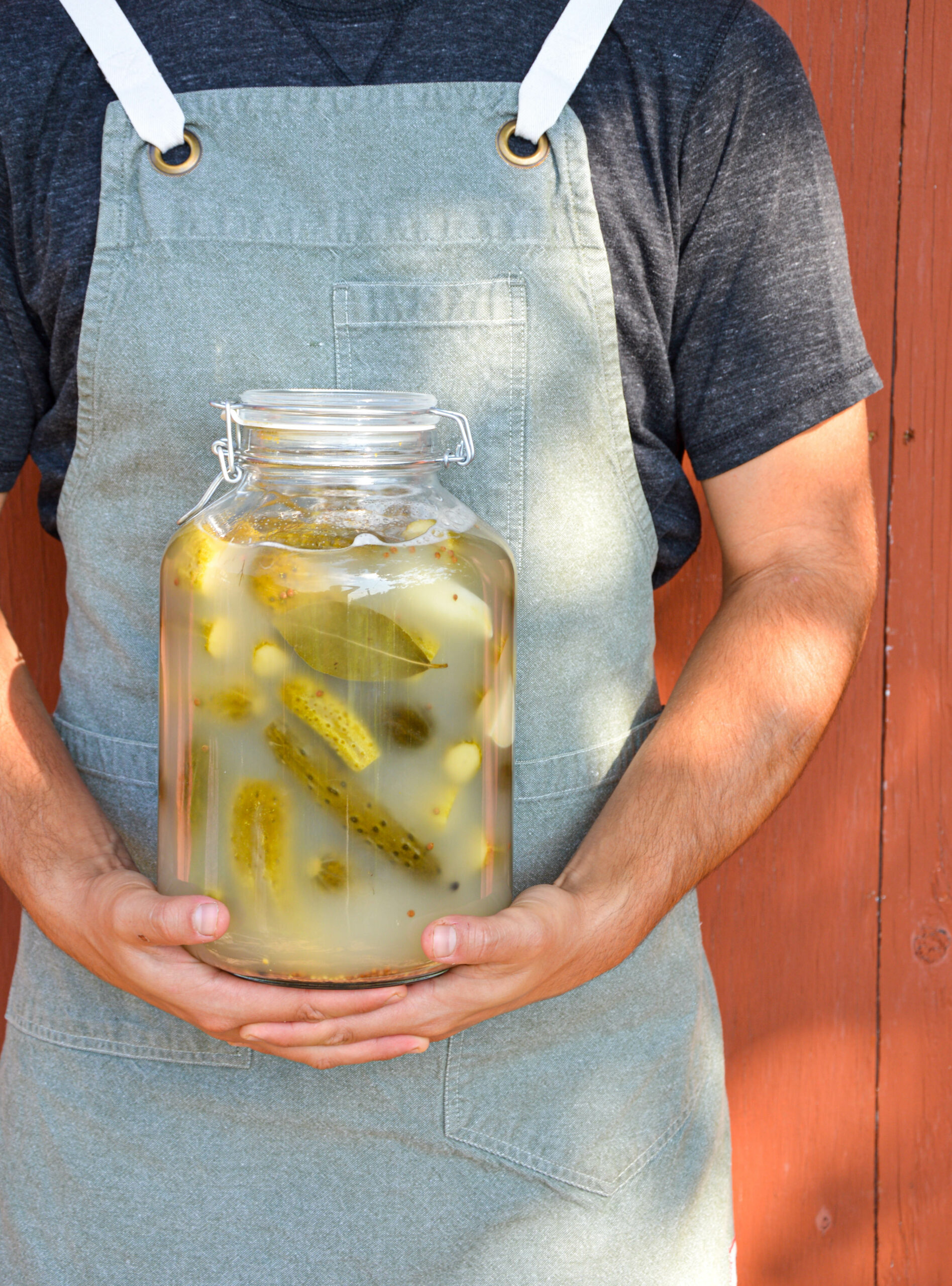
crunchy, sour, satisfying.
True deli-style half-sour pickles are a rare sight these days, especially the further south one travels. Their vinegar and bread ‘n’ butter counterparts have mostly cornered the market, and while I love a good, cold vinegar pickle spear with a sandwich, nothing quite matches up to a true half-sour. I stumbled upon a recipe for these classic, garlic-dilly pickles a couple of years back and can’t imagine a better way to use up those late-season cukes — but don’t feel limited! This recipe works with beans, carrots, zucchini, cauliflower, radishes and much more. If you have been looking for an easy way to get into fermentation, look no further than this quick and simple recipe.
Recipe by Jesse Feldberg, Roanoke
Ingredients
8-10 small pickling cucumbers, or 2-3 larger cukes speared or sliced
1.5 tablespoons pickling mix
1 bay leaf (these add tannins which help keep the pickles crunchy!)
5 large dill sprigs (more or less to taste)
3-4 cloves garlic, slightly smashed
1 liter (~4 cups) filtered water
20 grams non-iodized salt
½ teaspoon “Pickle Crisp” (aka calcium chloride, optional — if omitted, use 1-2 additional bay leaves)
Pickling Mix
2 parts coriander seed, 1 part mustard seed, 1 part whole black peppercorns. Optional: crushed red pepper, allspice, clove to taste. You can also purchase a pre-mixed pickle spice mix at most grocery stores.
INSTRUCTIONS
Clean a 32oz jar and fermentation weight (if using) thoroughly — most dishwashers will sanitize well enough. Fido-style flip-top jars work perfectly and eliminate the need for a fermentation lid.
Add your spice mix to the bottom of the jar, as well as a bay leaf and some of the dill. Next, pack in your cucumbers and garlic, stuffing the remaining dill in the middle of the jar.
Create your brine: Heat a small portion of the water, then add and dissolve the salt and Pickle Crisp. Remove from heat and add remaining water.
Pour the brine over the veggies, leaving about one half to one inch of headspace. Weigh everything down with a glass weight or a Ziploc bag filled with leftover brine — it is very important that everything stays submerged during the fermentation to avoid contamination.
Let the jar ferment at room temperature for 5 days (if using a traditional Mason jar lid you will need to “burp” the jar daily), and then transfer to the fridge for a week (I have never been able to wait the full week to try them, but this is when they are best). Enjoy!
